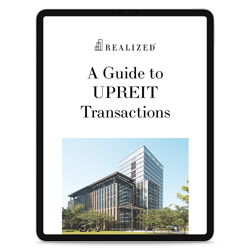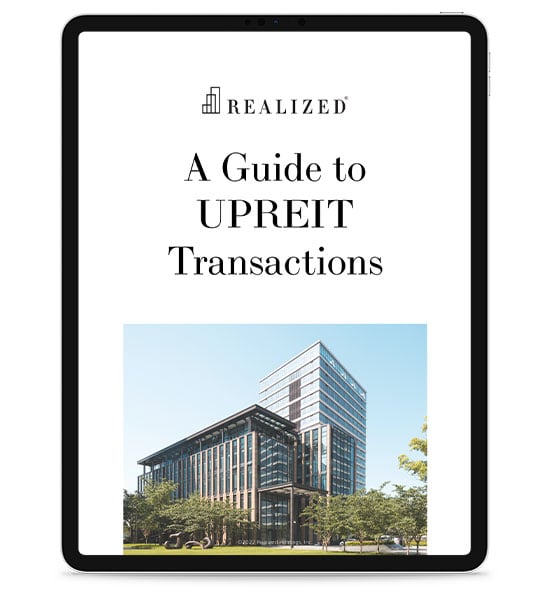
The majority of real estate investment trusts (REITs) are publicly traded entities, but it’s usually a long road from their formation to being listed on a publicly-traded stock exchange.
Many REITs start out as property management companies that own and manage income-producing real property assets. There are two main types of REIT entities: equity and mortgage REITs. Equity REITs focus on investments in various commercial real estate sectors, while mortgage REITs provide financing for commercial and residential mortgages and mortgage-backed securities.¹
In this article we’ll take a closer look at how REITs are formed and the many organizational and operational requirements to which these companies must adhere.
First Steps in Forming a REIT
Newly formed REITs are private business entities prior to listing on a major exchange -- there are just under 180 REITs listed on the NYSE.²
These organizations must adhere to numerous organizational and operational requirements to qualify as real estate investment trusts and receive an exemption from taxation at the corporate level. Among them:
- REITs must have a minimum of 100 shareholders by their second year; a rule commonly referred to as the 100 shareholder test.
- REITs cannot be closely held after their first year. That means five or fewer shareholders cannot retain more than 50 percent of the company’s shares. This rule is commonly called the 5/50 test.
REITs also must have a board of directors or board of trustees, and all shares must be transferable.
In order to meet the 100 shareholder requirement, you’ll have to solicit capital from private investors through a prospectus, or private placement memorandum. This document, which outlines your investment offering, is absolutely critical to ensuring your newly formed REIT gains the momentum needed to attain and retain enough shareholders to meet REIT status.
Your prospectus should tell the following story:
- Why investors should consider placing their capital in your company
- The amount of stock or equity they will receive for their capital
- The knowledge and experience of the management team
- Key investment market demographics and highlights
- The REITs business model
The prospectus should close with a subscription agreement, which is the legally binding contract between the issuer and investor. A well-outlined prospectus is absolutely critical to raising capital and bringing shareholders into the company.
Lastly, many REITs focus on one sector of commercial real estate, such as hospitality, retail shopping centers, or healthcare and managed-care facilities. Management should outline their extensive expertise in these areas and how that knowledge can potentially translate into shareholder value when writing their private placement memorandums.
IRS Compliance Requirement for REITs
REITs must file a Form 1120-REIT when filing tax returns to avoid taxation at the corporate level. They also must mail out a letter to shareholders each year that delineates shareholder ownership interests.³ This document helps REIT managers verify the 100 shareholder and 5/50 requirements.
REITs also must distribute a minimum of 90 percent of taxable income back to shareholders in the form of dividends in order to avoid taxation. For investors, it's important to understand how REIT dividends are taxed.
The Bottom Line
Forming a REIT is complicated -- particularly with shareholder ownership.
If you are considering forming a REIT, it might be best to seek counsel from experienced securities, tax, and banking professionals to ensure you meet the many organizational and operational stipulations, as well as meet and maintain IRS requirements for REIT filing status. Lastly, if writing isn’t your thing, consider engaging professional help when penning your prospectus, since you likely won’t attract a large pool of serious investors without nailing this formal offering document.
Sources:
1. Guide to Mortgage REIT Investing, Nareit, https://www.reit.com/what-reit/types-reits/guide-mortgage-reits
2. REIT Industry Monthly Data, September 2021, Nariet, https://www.reit.com/data-research/reit-market-data/reit-industry-financial-snapshot
3. Deadline For REIT Shareholder Demand Letters, Ernst & Young LLP, https://taxnews.ey.com/news/2021-0006-january-30-2021-deadline-for-reit-shareholder-demand-letters
This material is for general information and educational purposes only. Information is based on data gathered from what we believe are reliable sources. It is not guaranteed as to accuracy, does not purport to be complete and is not intended to be used as a primary basis for investment decisions. It should also not be construed as advice meeting the particular investment needs of any investor. Realized does not provide tax or legal advice. This material is not a substitute for seeking the advice of a qualified professional for your individual situation. There is no guarantee that companies that can issue dividends will declare, continue to pay, or increase dividends. A REIT is a security that sells like a stock on the major exchanges and invests in real estate directly, either through properties or mortgages. REITs receive special tax considerations and typically offer investors high yields, as well as a highly liquid method of investing in real estate. There are risks associated with these types of investments and include but are not limited to the following: Typically no secondary market exists for the security listed above. Potential difficulty discerning between routine interest payments and principal repayment. Redemption price of a REIT may be worth more or less than the original price paid. Value of the shares in the trust will fluctuate with the portfolio of underlying real estate. Involves risks such as refinancing in the real estate industry, interest rates, availability of mortgage funds, operating expenses, cost of insurance, lease terminations, potential economic and regulatory changes. This is neither an offer to sell nor a solicitation or an offer to buy the securities described herein. The offering is made only by the Prospectus.



